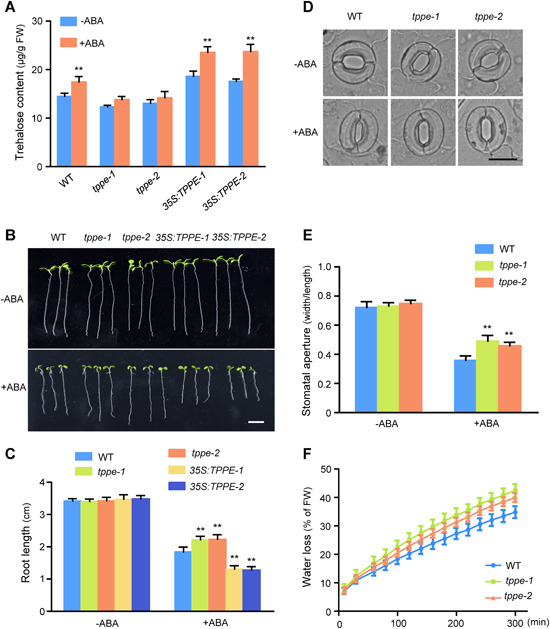Figure 2.

Loss‐of‐function mutants of TPPE are less sensitive to abscisic acid (ABA) than the wild type (WT) in terms of root inhibition and stomatal closure
(A) Trehalose contents in 10‐d‐old WT, tppe‐1, tppe‐2, and TPPE overexpression plants with or without ABA treatment (50 μM). The values are means ± SD (n > 10). *P < 0.05, **P < 0.01 (Student's t‐test). (B) Comparison of root elongation among genotypes on ½ MS with or without 30 μM ABA. Scale bar, 1 cm. (C) Statistical analysis of the differences in root length among the plants shown in (B) The values are means ± SD (n > 10), *P < 0.05, **P < 0.01 (Student's t‐test). (D) Representative images showing stomatal apertures before and after 2 h treatment with 10 μM ABA. Scale bar, 10 μm. (E) Quantification of stomatal apertures. The values are means ± SD (n > 100) from five biological replicates. *P < 0.05, **P < 0.01 (Student's t‐test). (F) The detached leaves of 4‐week‐old WT, tppe‐1, and tppe‐2 plants were used for relative water loss measurements. The experiments were repeated three times with similar results. Each data point represents the mean ± SD (n = 3).
